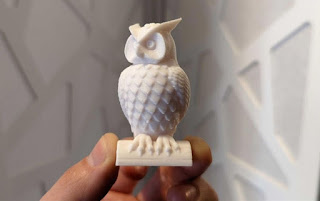What types of materials can be used with resin 3D printing?
Resin 3D printing has become an increasingly popular method of additive manufacturing due to its ability to produce high-resolution and intricate models with a smooth finish. However, not all materials are suitable for use with resin printing technology. In this blog, we will discuss the types of materials that can be used with resin 3D printing, and how to choose the best 3D printing service for your needs.
What is Resin 3D Printing?
Best 3d Printing Service, also known as stereolithography, is a type of additive manufacturing process that uses a photopolymer resin that hardens when exposed to a UV light source. The 3D printer uses a laser or LCD screen to selectively expose the resin, layer by layer, until the object is complete. This process allows for the creation of highly detailed and complex geometries that are difficult or impossible to achieve with other 3D printing technologies.
Types of Resins Used in 3D Printing-
There are several types of resins used in 3D printing, each with its own unique properties and characteristics. Here are the most common types of resins used in Resin Printing Service:
1. Standard Resin:
Standard resin, also known as general-purpose resin, is the most commonly used material in resin printing service. It is ideal for creating highly detailed parts with a smooth surface finish. Standard resin is also highly durable, making it an excellent choice for functional prototypes and small-scale production runs.
One of the benefits of using standard resin is its affordability. It is the most cost-effective material used in resin printing, making it a popular choice for businesses and individuals on a tight budget. However, it is worth noting that standard resin is not suitable for outdoor use as it can become brittle when exposed to UV light.
2. Tough Resin:
Tough resin is a popular choice for creating functional parts that require high strength and durability. It has a higher tensile strength than standard resin, making it ideal for creating parts that need to withstand high stress or impact.
Tough resin is also highly resistant to deformation and has a higher heat deflection temperature, making it suitable for creating parts that need to withstand high temperatures. Its high strength and durability make it an excellent choice for creating functional prototypes, jigs, and fixtures.
3. Flexible Resin:
Flexible resin, also known as rubber-like resin, is a popular choice for creating parts that require flexibility. It has a rubber-like texture and can be bent, stretched, and twisted without breaking. Flexible resin is ideal for creating parts such as gaskets, seals, and other objects that require elasticity.
One of the benefits of using flexible resin is its ability to mimic the properties of rubber. This makes it an excellent choice for creating prototypes for products that will eventually be made using injection moulding.
4. Castable Resin:
Castable resin is a type of resin used to create moulds for casting metal objects. It is designed to burn cleanly without leaving any residue, making it ideal for creating moulds for jewellery making, dental applications, and other small metal objects.
Castable resin is highly accurate and can capture even the most intricate details. It is also easy to work with and can be polished to a high shine, making it an excellent choice for creating high-quality metal objects.
5. Dental Resin:
Dental resin is a specialized type of resin used in the dental industry to create dental appliances such as dentures, retainers, and aligners. It is biocompatible and meets all of the FDA's requirements for dental materials.
Dental resin is highly accurate and can produce dental appliances with a perfect fit. It is also durable and can withstand the wear and tear of everyday use.
6. Clear Resin:
Clear resin is an excellent choice for creating parts that require a transparent or translucent finish. It is ideal for creating lenses, light covers, and other objects that require optical clarity. Clear resin is highly accurate and can produce parts with a smooth and glossy finish.
7. High temperature resin:
High temperature resin is a type of resin used to create parts that need to withstand high temperatures. It is ideal for creating parts such as moulds, jigs, and fixtures that need to withstand heat. High temperature resin has a higher heat deflection temperature than standard resin, making it suitable for creating parts that need to withstand high temperatures.
Choosing the best 3D Printing service-
When choosing a resin printing service, it is important to consider several factors, including the quality of the prints, the speed of the printing process, and the cost of the service. Here are some tips for finding the best 3D printing service:
1. Look for a service that offers a variety of resins to choose from. This will allow you to select the material that is best suited for your project.
2. Check the printing resolution of the service. The higher the resolution, the more detailed and accurate the final print will be.
3. Consider the turnaround time of the service. If you need your print quickly, look for a service that offers fast printing and shipping times.
4. Compare the prices of different services to find the best value for your money. Keep in mind that the cheapest option may not always be the best quality.
Conclusion-
Resin Printing Service offers a wide range of possibilities for creating high-quality, detailed objects. By choosing the right resin for your project and selecting the best resin printing service, you can ensure that your final product is of the highest quality. With a little research and careful consideration, you can find the perfect and the Best 3d Printing Service for your needs.
Visit – Makenica Now



.jpg)
.jpg)
Comments
Post a Comment